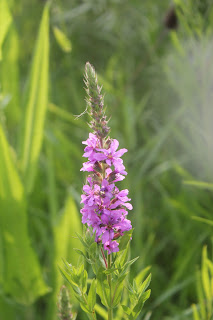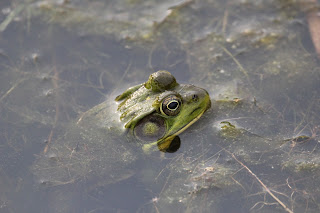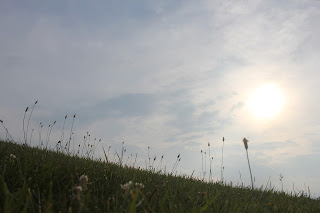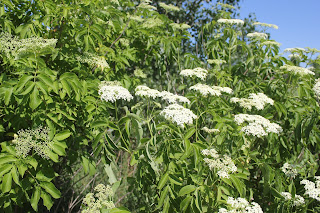The first thing that really caught my eye was a male Northern Cardinal. I don't have that many pictures of this common SW Ontario bird, so I was happy with the shots I got!
The Mallard ducklings never seem done hatching! I came across these young birds with their mother.
The male Mallards are molting right now. They will look like their female counterparts for a few weeks, but soon will regain their familiar plumage.
The world of Dragonflies and Damselflies is still new to me, so correct me if I've made any identification mistakes. I believe this one is a Familiar Bluet.
There is a Muskrat that frequents the pond. I've stumbled across him/her on numerous occasions.
Yet another Familiar Bluet?
I saw this wasp yesterday. It is called a Mud Dauber as it is usually found around, you guessed it, mud!
I find that American Robins always seem so photogenic.
I finally saw my first Hairstreak! I must say, they are smaller than I thought. After consulting my guide, I can confidently call this one an Acadian Hairstreak!
A plant that I had missed the day was the invasive Purple Loosestrife (Lythrum salicaria). Although they are quite pretty, they spread rapidly and cause havoc on the native ecosystem.
Red-winged Blackbirds and Green Frogs were everwhere.
The local Barn Swallows were making their rounds.
An exciting find was Butter-and-eggs (Linaria vulgaris). This was the only spot they were found around the pond.
Sweet Clover (Melilotus officinalis) could be seen along the trail.
There was an abundance of English Plantain (Plantago lanceolata).
Common Plantain (Plantago major) was not far off.
It is amazing that only a few minutes away, such as rich ecosystem exists.
 |
| Variable-crown Vetch |
 |
| Barn Swallow Photobomb! (Top Center) |
Fast forward a few days (4 to be exact) I finally got out to photograph a few plant specimens that I had seen after my initial trip, but had no camera to take pictures.
Bitter Nightshade (Solanum dulcamara) was a nice colour purple. The flowers are quite tiny as well!
 |
| Estimated Flower Length: 12mm (0.4724409in) |
I found some Bull Thistle (Cirsium vulgare) a couple days prior, and knew the general area of which to find them, but I was unable to locate the plants in all the greenery when I went out. I was about to give up when-OUCH! I had found my plant.
Wild Carrot (Daucus carota), also known as Queen Anne's Lace, was just beginning to flower.
Red Osier Dogwood (Cornus stolonifera) was covered in berries. The red ROD branches are a common sight in Christmas and holiday wreaths.
That is it for now! More Summer birding and nature posts will be coming soon!



































































